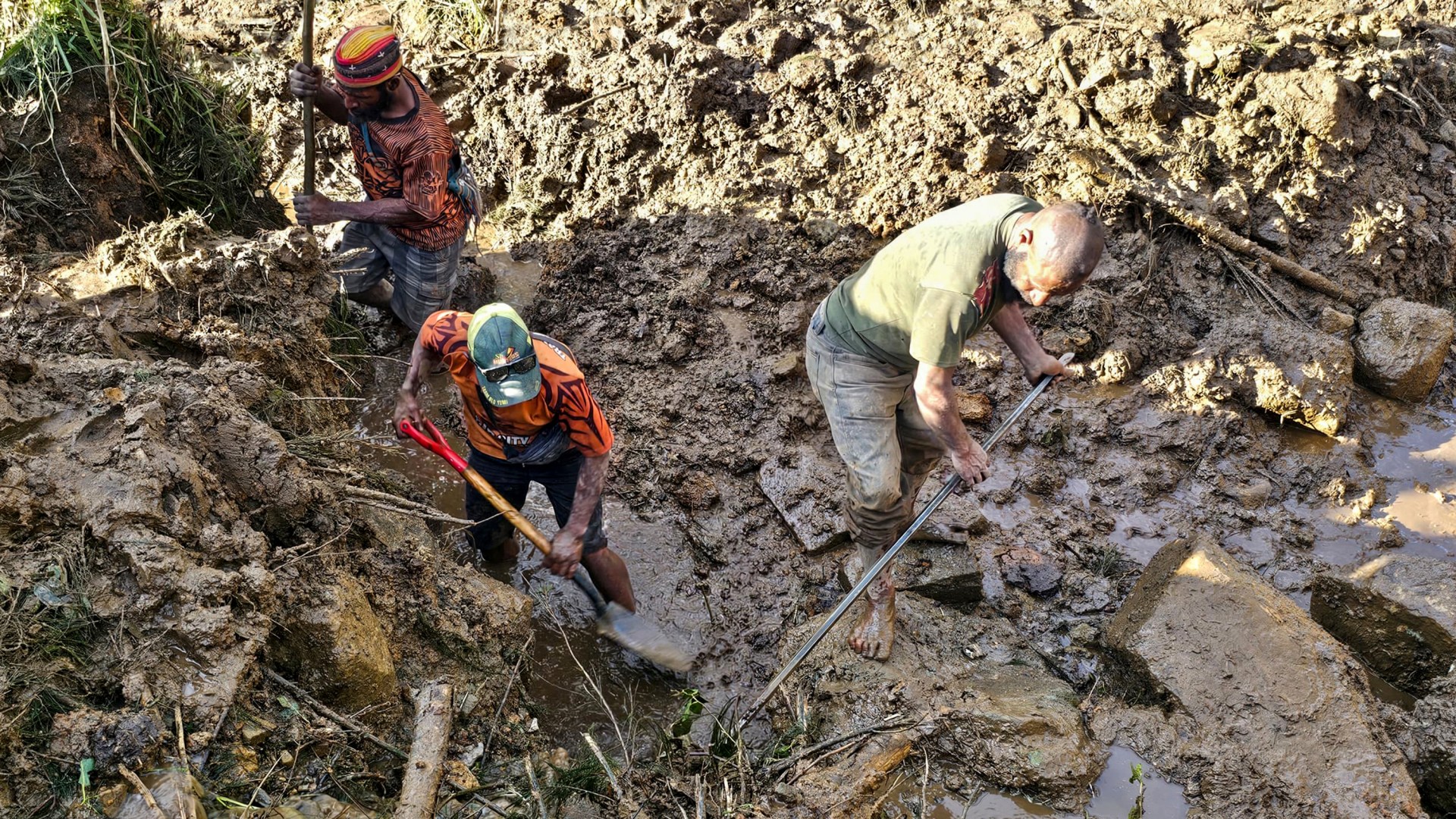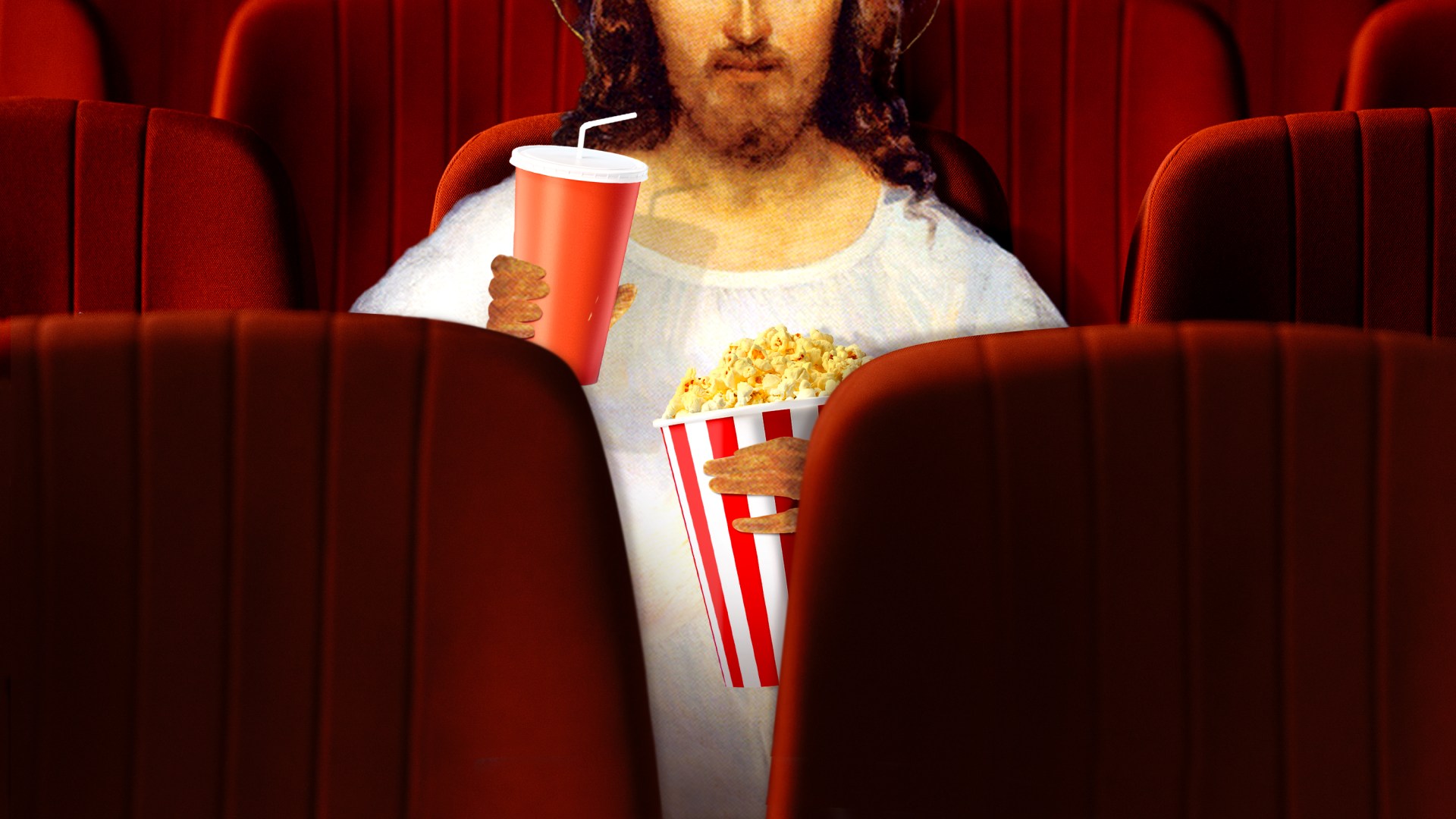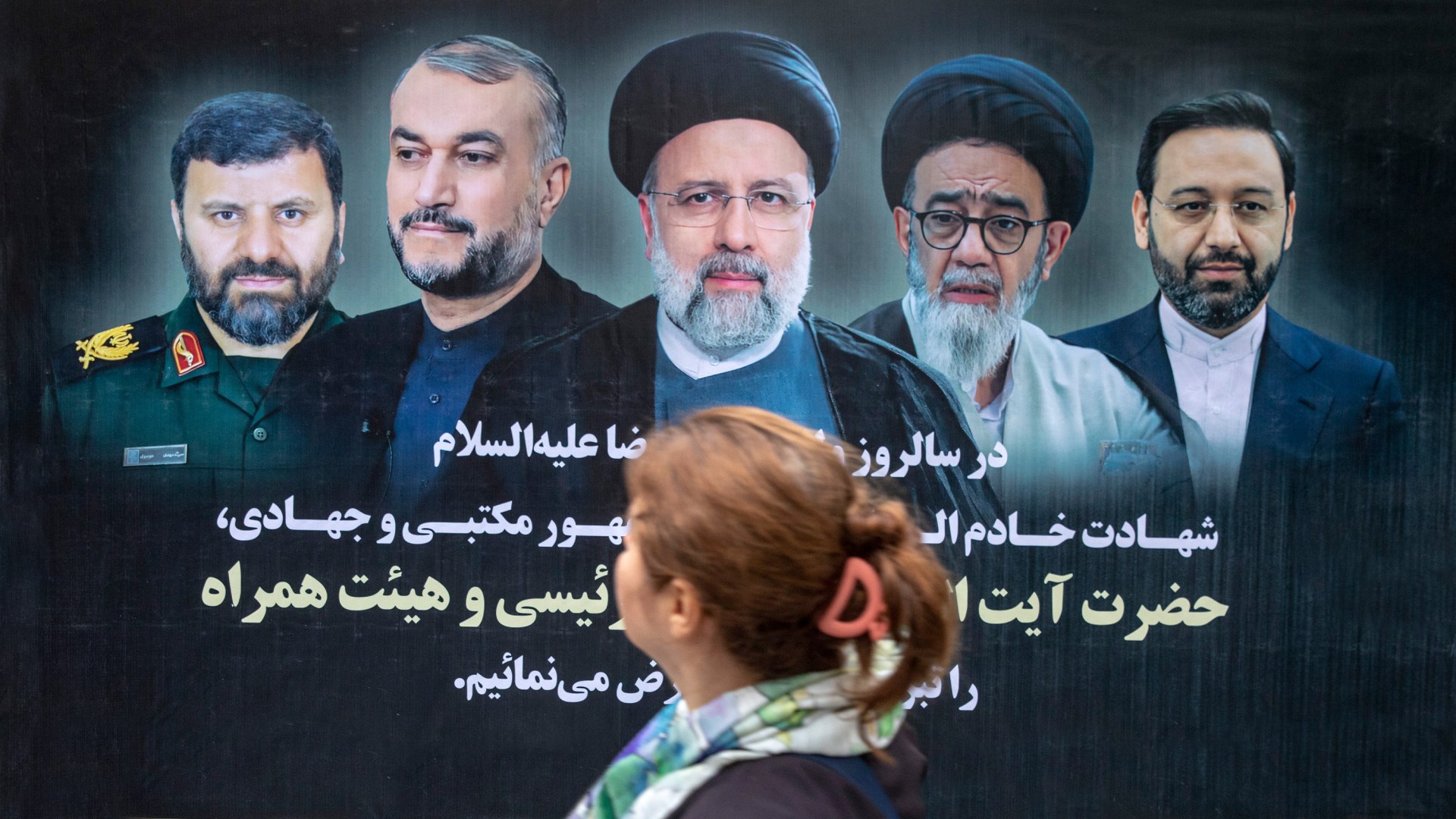Family members sit atop boulders, weary from lifting rocks to search for bodies. Men with shovels bend under the weight of sorrow and effort as they work to leave literally no stone unturned. Disaster has struck again: A massive mudslide in Papua New Guinea on Friday morning buried an estimated 2,000 people alive, covering dozens of homes and an elementary school.
By now, it seems safe to assume that anyone not yet rescued from under as much as 26 feet of debris has died. I flip from story to story, looking for more information, but eventually I have to stop. I’m starting to feel claustrophobic myself, imagining a roar of mud and rock waking me from my early morning slumber.
I had an all too similar experience with the video of the bridge collapse in Baltimore earlier this year. As I watched, I remember realizing I was holding my breath. The night lights of Baltimore glittered in the background. It was almost cinematic—I might have mistaken the scene for the beginning of a 1980s rom-com, the city shot right before the credits roll—were it not for the dark silhouette of the ship hitting the bridge, reminding me of the truth: There were trucks and workers on that bridge as it fell. I couldn’t see their faces, but I was watching people die.
And it’s not just Baltimore and Papua New Guinea. Over the past year, as producer of CT’s news podcast, The Bulletin, I’ve been exposed to many tragedies from afar. I’ve read photographic essays about Ukrainians who retrieve dead Russian bodies from the battlefield, scrolling through to get the gist and trying not to linger on the graphic images. I’ve read accounts of school shootings and racially motivated crimes and had to pause for a deep breath. I’ve scanned reports of famous personalities who’ve died and felt the familiar twinge of distant sadness. And I myself am no stranger to death.
Yet for all that, sometimes when I encounter tragedies like these, a thought flits across my mind: It could have been worse. I stop myself short, embarrassed. Have I become indifferent and callous? Or have I simply seen too much?
I’m not alone in wondering. As early as the 1970s, researchers began to raise an alarm about how visual depictions of violence could be detrimental to viewers, especially children. After seeing violent footage of the 9/11 attacks or school shootings, for example, research subjects reported greater distress than those who had only heard or read about the same events.
These results were hardly a surprise. Participating, even vicariously, in the suffering of others can bring great pain, anxiety, and sometimes lasting trauma. If a death in one’s own family could destroy a small, known universe, how can the human mind comprehend loss on a far larger scale?
Separation by pixels only makes so much difference. We don’t need to be flesh-and-blood witnesses for suffering to make an indelible mark, and our digital media environment is designed to make us witnesses of tragedy daily. Doomscrolling past one troubling headline after another can lead to increased feelings of frustration, worry, and despair. Is it any wonder three in four Americans say they’re “overwhelmed by the number of crises facing the world right now”?
The constant stream of local and global suffering we see on our screens can leave us weary, numb, or disillusioned. We may let lapse the kind of presence and care to which God calls us. Desensitized, we learn to gloss over “smaller” tragedies, letting only mass casualties provoke our sorrow, instituting a hierarchy of grief and forgetting the gravity of every marker of sin and death in this broken world.
Both science and Scripture confirm that God never designed us to be Atlas, carrying the whole world’s suffering on our shoulders. Jesus came to bear that weight for us (1 Pet. 2:24). Yet God did create us to “carry each other’s burdens, and in this way … fulfill the law of Christ” (Gal. 6:2). He formed mirror neurons in our brains so that even at the cellular level we could understand one another’s pain. He commanded us to comfort each other from the wellspring of comfort we ourselves have received (2 Cor. 1:4)—a task that, admittedly, can seem almost impossible amid a continual onslaught of bad news.
So how do we fulfill the commandment to love our neighbor as ourselves when we’re not sure we can bear their stories of sorrow?
In my work at The Bulletin and beyond, I’ve benefited from advice from author and therapist Aundi Kolber, who encourages us to protect against an uncharitable numbness by caring first for ourselves. “When Jesus says, ‘Love your neighbor as yourself,’” Kolber told me in an interview, “we have to recognize the wisdom of ‘yourself’ is included there.”
Practically speaking, that means scrutinizing my media intake, creating time limits for engagement, and resisting the tendency toward consuming media in isolation. Kolber recommended reading or listening to the news as a “single-minded” activity, not as part of our regular multitasking routines. This lets us attend to our bodies’ responses of anxiety or discomfort while “witnessing from a place of dignity and integrity.”
For others, different boundaries may be more helpful, according to our personalities, our wounds, and the individual capacities with which God has equipped us. On a recent episode of The Bulletin, host and CT editor in chief Russell Moore noted that some Christians may need to step back from media consumption for a season to instead engage deeply with Scripture. For others, said cohost Mike Cosper, a conscious differentiation between public and personal life may be helpful.
Whatever practical changes we make to our media habits, though, it will still be difficult to bear witness to the suffering of the world, to sit with the statistics about the war in Gaza, stories of gun violence, or testimonies of racial injustice. Our tenderness to tragedy will prove more durable if it’s anchored in community lament.
In lament, “we sensitize and strengthen our hearts,” writes singer-songwriter Sandra McCracken. Whether in a Sunday morning worship ritual of the prayers of the people, a Wednesday night prayer service, or a special gathering for a specific tragedy, corporate lament offers us an outlet for the emotions that might otherwise overwhelm us.
Together, we name injustice and tragedy and place it within the greater narrative arc of God’s redemptive faithfulness. We are reminded that God cares about the headlines, that he reigns over all worldly leaders (Dan. 2:21), that not even the “smallest” tragedy escapes his notice (Matt. 10:29). It is here, says author Sheila Wise Rowe, in grieving and growing with others, that we discover “our pain and anger are transformed and mobilized from expressions of despair into signs of hope.”
In all this, one thing is sure: God calls us to respond to suffering. As I scan the headlines each week, preparing a new episode of The Bulletin, I try to scrape off the calluses that build up on my heart.
When my eyes catch on a story that details great hurt, I often pray, Come quickly, Lord Jesus (Rev. 22:20). When I read statistics about disasters, I pause to remember that each number represents a name, a person for whom Christ died. As I scan the unfamiliar faces in newspaper pictures, I call to mind those faces I do know—family and friends in need, folks I support in grief care groups. We’re all bound together in our longing for redemption in the midst of a broken world, and I ask God to “break my heart for the things that break the heart of God.”
Finally, I look for ways to act, whether through a donation to a faraway cause or direct care in my community. I may not be able to offer a cup of cold water to a Ukrainian widow, but I can send funds overseas and care for widows in my church. I may not be able to solve the conflict in the Middle East, but I can seek to be a peacemaker in my workplace and in my neighborhood. Even in the face of the very worst news, I am not powerless—and God is not powerless either.
“In this world you will have trouble,” Jesus told his disciples. “But take heart! I have overcome the world” (John 16:33).
Across the millennia, we offer a heartbroken amen. This world is not as it should be, as each day’s headlines make clear anew. But those headlines need not send us into despair or make us cower in protective indifference. Though sin, death, and the devil make the news, Christ has overcome them all.
Clarissa Moll is the producer of Christianity Today’s weekly news podcast, The Bulletin.




















































